-
 Bitcoin
Bitcoin $119100
-2.16% -
 Ethereum
Ethereum $4300
-0.31% -
 XRP
XRP $3.171
-2.99% -
 Tether USDt
Tether USDt $1.000
-0.01% -
 BNB
BNB $814.1
-1.33% -
 Solana
Solana $176.5
-4.67% -
 USDC
USDC $0.0000
0.00% -
 Dogecoin
Dogecoin $0.2267
-5.83% -
 TRON
TRON $0.3465
2.15% -
 Cardano
Cardano $0.7870
-4.98% -
 Chainlink
Chainlink $21.66
-2.27% -
 Hyperliquid
Hyperliquid $43.89
-4.62% -
 Stellar
Stellar $0.4414
-3.35% -
 Sui
Sui $3.707
-6.73% -
 Bitcoin Cash
Bitcoin Cash $599.1
3.73% -
 Hedera
Hedera $0.2504
-6.96% -
 Ethena USDe
Ethena USDe $1.001
-0.01% -
 Avalanche
Avalanche $23.21
-4.99% -
 Litecoin
Litecoin $121.1
-3.55% -
 Toncoin
Toncoin $3.415
0.45% -
 UNUS SED LEO
UNUS SED LEO $9.002
-1.24% -
 Shiba Inu
Shiba Inu $0.00001314
-5.43% -
 Uniswap
Uniswap $11.45
1.63% -
 Polkadot
Polkadot $3.926
-5.37% -
 Cronos
Cronos $0.1694
1.63% -
 Ethena
Ethena $0.8117
-2.35% -
 Dai
Dai $1.000
0.00% -
 Bitget Token
Bitget Token $4.422
-1.43% -
 Monero
Monero $264.2
-0.83% -
 Pepe
Pepe $0.00001137
-8.29%
What is Helium?
Helium's decentralized wireless network uses user-owned Hotspots to provide long-range IoT coverage, rewarding owners with HNT cryptocurrency for data transmission. Network success hinges on Hotspot distribution and ongoing security improvements.
Mar 12, 2025 at 10:10 am
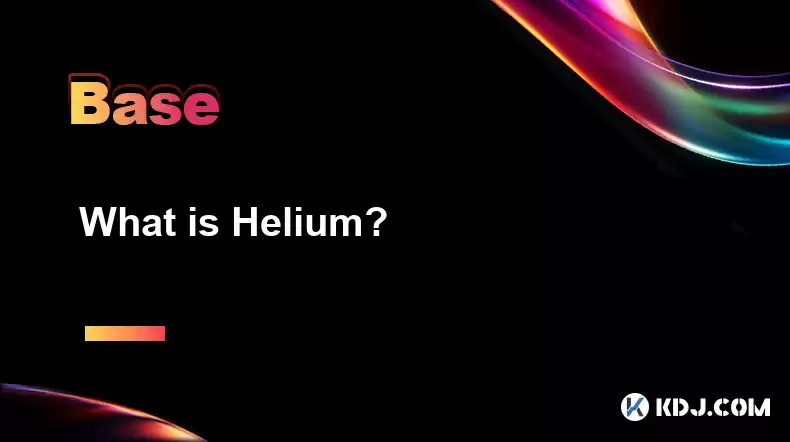
Key Points:
- Helium is a decentralized wireless network powered by its native cryptocurrency, HNT.
- It uses a novel approach, leveraging a network of user-owned "Hotspots" to provide long-range, low-power wireless coverage.
- HNT is earned by Hotspot owners for providing network coverage and data transfer.
- The network's success depends on the participation and geographic distribution of Hotspots.
- Security and scalability are ongoing challenges for the Helium network.
What is Helium?
Helium is a unique cryptocurrency project aiming to create a decentralized, peer-to-peer wireless network. Unlike traditional cellular networks or Wi-Fi, Helium utilizes a network of geographically dispersed "Hotspots" – essentially, gateways connected to the internet via Ethernet or cellular data. These Hotspots are owned and operated by individuals, earning them HNT tokens for their contribution to network coverage and data transmission. The long-range, low-power network is particularly well-suited for Internet of Things (IoT) devices.
How does the Helium Network work?
The Helium network functions through a consensus mechanism that rewards Hotspot owners for providing coverage and transmitting data. When an IoT device needs to send data, it searches for the nearest Hotspot. The Hotspot relays the data to the network, and the Hotspot owner is rewarded with HNT. The network's decentralized nature ensures resilience and redundancy; if one Hotspot goes offline, others can seamlessly take over. The network leverages a Proof-of-Coverage (PoC) mechanism to prevent fraudulent activity and ensure accurate location data.
How to earn HNT?
The primary way to earn HNT is by operating a Helium Hotspot. This involves purchasing a Hotspot device, setting it up, and connecting it to the internet. The more coverage your Hotspot provides and the more data it transmits, the more HNT you earn. The amount of HNT earned varies depending on factors like location, network congestion, and the quality of your Hotspot's connection. Helium also rewards those who participate in network governance and development.
What is a Helium Hotspot?
A Helium Hotspot is a physical device that acts as a node in the Helium network. It's essentially a small gateway that connects IoT devices to the internet using the Helium long-range, low-power network. Hotspots transmit data packets to each other, forming a mesh network. Hotspots are typically connected to the internet via Ethernet or cellular data. The location of the Hotspot plays a crucial role in its earning potential; sparsely covered areas tend to offer better rewards.
How to set up a Helium Hotspot?
Setting up a Helium Hotspot involves several steps:
- Purchase a compatible Helium Hotspot device from an authorized retailer.
- Create a Helium account and register your Hotspot.
- Connect your Hotspot to the internet via Ethernet or cellular data.
- Follow the manufacturer's instructions to configure your Hotspot and connect it to the Helium network.
- Ensure your Hotspot has a clear line of sight to maximize its coverage area.
What are the risks associated with Helium?
Like any cryptocurrency, investing in HNT carries risks. The value of HNT can fluctuate significantly, and there's no guarantee of consistent earnings from operating a Hotspot. Network congestion in densely populated areas can reduce individual Hotspot earnings. Technical issues with your Hotspot or the network itself could also affect your income. Regulatory changes could also impact the operation and profitability of Helium Hotspots.
What are the future prospects of Helium?
Helium's future depends on several factors, including the continued adoption of IoT devices, the growth of the Helium network, and the overall health of the cryptocurrency market. The network's scalability and security are crucial for its long-term success. The ability to attract and retain Hotspot owners is also vital for maintaining network coverage and reliability. New applications and use cases for the Helium network could significantly influence its future growth.
What is the difference between Helium and other wireless networks?
Unlike traditional cellular networks or Wi-Fi, Helium is a decentralized, peer-to-peer network. It relies on a community of Hotspot owners rather than a centralized provider. This decentralized nature offers benefits like increased resilience, lower costs (potentially), and wider coverage in areas underserved by traditional networks. However, the coverage and speed may be less reliable than established networks.
How is the Helium Network secured?
The Helium network employs a Proof-of-Coverage (PoC) consensus mechanism to prevent fraudulent activity. This mechanism verifies that Hotspots are genuinely located where they claim to be and are providing legitimate network coverage. The decentralized nature of the network also enhances security by making it more resistant to single points of failure. However, security remains an ongoing concern for all blockchain-based networks, including Helium.
What are the limitations of the Helium Network?
Helium's long-range, low-power network has limitations in terms of data throughput and speed. It's not intended to replace high-bandwidth networks like 5G or fiber optics. Network coverage is also dependent on the density and geographic distribution of Hotspots, meaning some areas may have limited or no coverage. The success of the network relies heavily on the participation and engagement of Hotspot owners.
Common Questions and Answers:
Q: Is Helium a good investment?
A: Investing in HNT involves significant risk due to cryptocurrency market volatility. The profitability of operating a Hotspot depends on various factors and is not guaranteed. Thorough research and risk assessment are crucial before investing.
Q: How much can I earn with a Helium Hotspot?
A: Earnings vary greatly depending on location, network congestion, and the quality of your Hotspot's connection. Some Hotspot owners report substantial earnings, while others earn little to nothing. There's no guaranteed income from operating a Hotspot.
Q: What are the costs associated with running a Helium Hotspot?
A: Costs include the initial purchase price of the Hotspot device, the cost of internet connectivity, and electricity consumption. Potential maintenance and repair costs should also be considered.
Q: Is Helium environmentally friendly?
A: The environmental impact of Helium is a complex issue. While it aims to provide a low-power network, the energy consumption of Hotspots and the manufacturing process of the devices still have environmental consequences. The overall environmental impact needs further analysis and comparison to traditional networks.
Disclaimer:info@kdj.com
The information provided is not trading advice. kdj.com does not assume any responsibility for any investments made based on the information provided in this article. Cryptocurrencies are highly volatile and it is highly recommended that you invest with caution after thorough research!
If you believe that the content used on this website infringes your copyright, please contact us immediately (info@kdj.com) and we will delete it promptly.
- Dogecoin, Presale, Surge: Riding the Meme Coin Wave
- 2025-08-12 11:10:12
- Dogecoin, Tron, and the ROI Reality Check: What's a Crypto Investor to Do?
- 2025-08-12 11:15:12
- Ethereum Layer-2 Scaling Competition Heats Up as ETH Breaks $4K
- 2025-08-12 10:30:12
- China Regulation, Stablecoins, and BNB Presale: Navigating the Crypto Landscape
- 2025-08-12 11:30:12
- Meme Coins, Investment, and Token Burns: What's Hot in 2025?
- 2025-08-12 10:30:12
- BlockDAG, Chainlink, Hedera: The Cryptos Enterprises are Eyeing
- 2025-08-12 09:30:12
Related knowledge
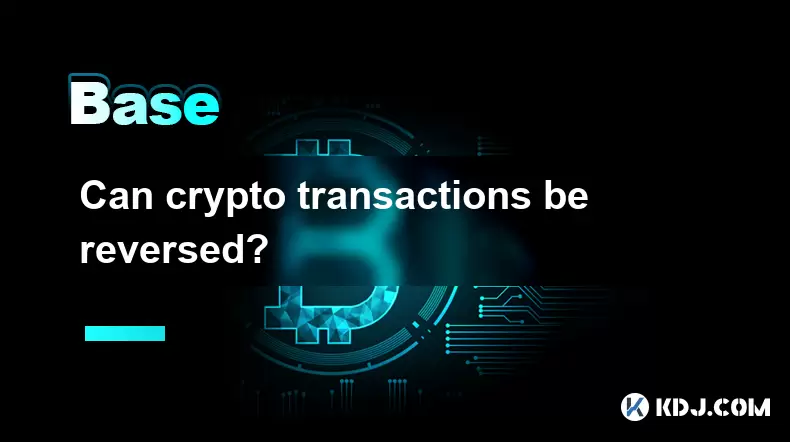
Can crypto transactions be reversed?
Aug 10,2025 at 01:35am
Understanding the Immutability of Blockchain TransactionsCryptocurrency transactions are built on blockchain technology, which is designed to be immut...
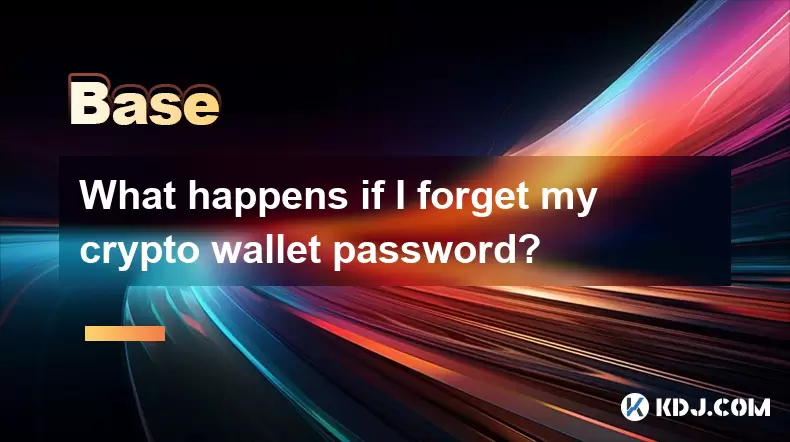
What happens if I forget my crypto wallet password?
Aug 09,2025 at 08:50am
Understanding the Role of a Crypto Wallet PasswordA crypto wallet password serves as a critical security layer that protects access to your digital as...
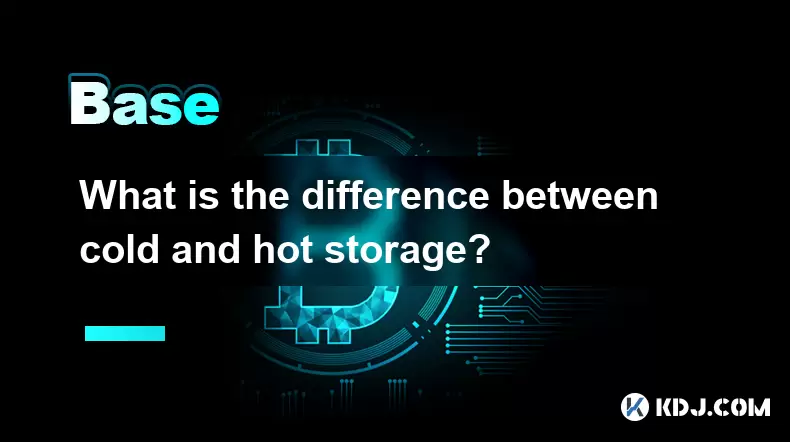
What is the difference between cold and hot storage?
Aug 12,2025 at 01:01am
Understanding Cold Storage in CryptocurrencyCold storage refers to offline methods of storing cryptocurrency private keys, ensuring they are not expos...
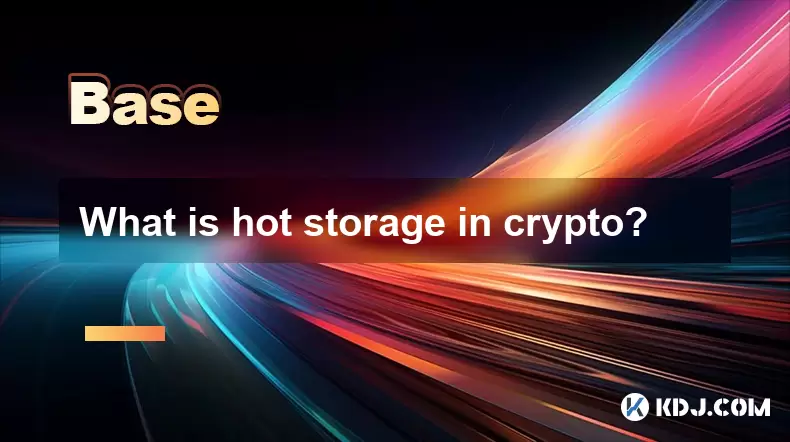
What is hot storage in crypto?
Aug 11,2025 at 07:08am
Understanding Hot Storage in CryptocurrencyHot storage refers to cryptocurrency wallets that are connected to the internet. Unlike cold storage soluti...
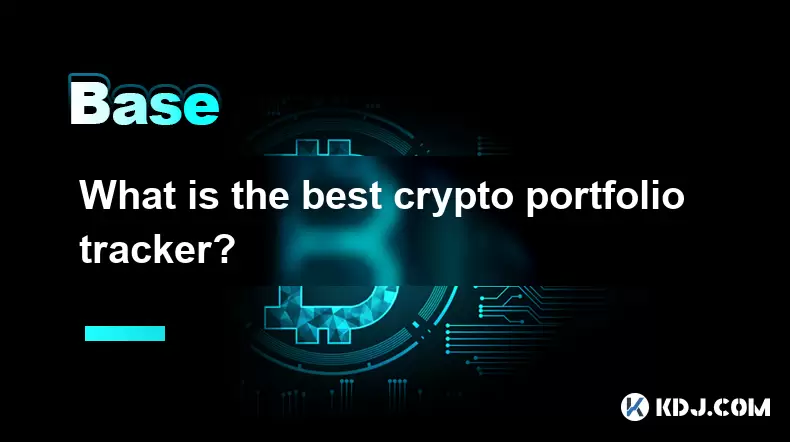
What is the best crypto portfolio tracker?
Aug 10,2025 at 05:08am
Understanding the Role of a Crypto Portfolio TrackerA crypto portfolio tracker is a digital tool designed to help investors monitor the performance of...
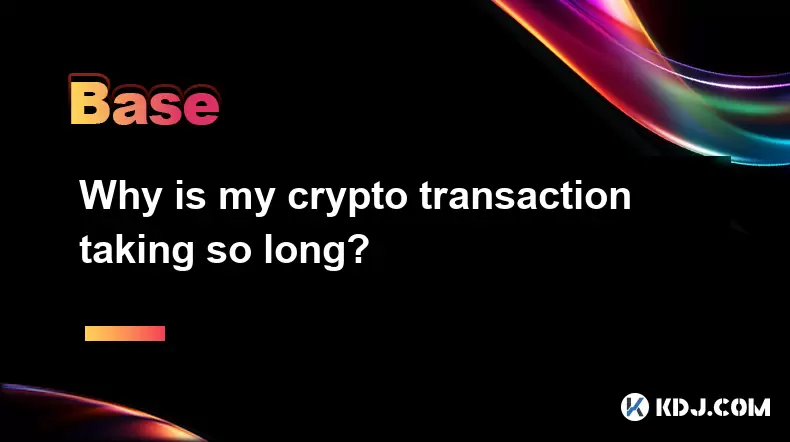
Why is my crypto transaction taking so long?
Aug 11,2025 at 11:35am
Understanding Blockchain Network CongestionWhen a crypto transaction is delayed, one of the most common causes is network congestion on the blockchain...

Can crypto transactions be reversed?
Aug 10,2025 at 01:35am
Understanding the Immutability of Blockchain TransactionsCryptocurrency transactions are built on blockchain technology, which is designed to be immut...

What happens if I forget my crypto wallet password?
Aug 09,2025 at 08:50am
Understanding the Role of a Crypto Wallet PasswordA crypto wallet password serves as a critical security layer that protects access to your digital as...

What is the difference between cold and hot storage?
Aug 12,2025 at 01:01am
Understanding Cold Storage in CryptocurrencyCold storage refers to offline methods of storing cryptocurrency private keys, ensuring they are not expos...

What is hot storage in crypto?
Aug 11,2025 at 07:08am
Understanding Hot Storage in CryptocurrencyHot storage refers to cryptocurrency wallets that are connected to the internet. Unlike cold storage soluti...

What is the best crypto portfolio tracker?
Aug 10,2025 at 05:08am
Understanding the Role of a Crypto Portfolio TrackerA crypto portfolio tracker is a digital tool designed to help investors monitor the performance of...

Why is my crypto transaction taking so long?
Aug 11,2025 at 11:35am
Understanding Blockchain Network CongestionWhen a crypto transaction is delayed, one of the most common causes is network congestion on the blockchain...
See all articles

























































































